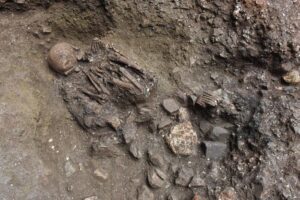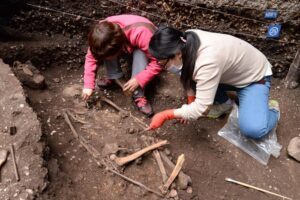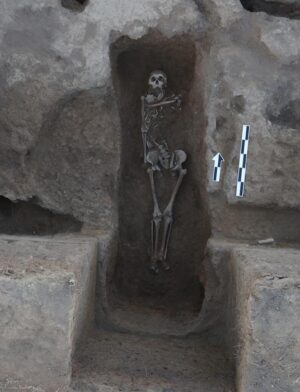
American Association for the Advancement of Science (AAAS)—Ancient genomes from Yunnan province, China, reveal a complex and deeply rooted population history in East and Southeast Asia, including the first potential representative of a previously uncharacterized “ghost” lineage that contributed to Tibetan ancestry. The findings* from genomic analysis also point to a distinct Central Yunnan ancestry linked to early Austroasiatic populations. Collectively, this work highlights Yunnan’s pivotal role as a genetic and cultural crossroads over millennia. Ancient DNA from East and Southeast Asia reveals a complex population history beginning at least 19,000 years ago, with early splits between northern and southern East Asian lineages. However, gaps remain in understanding the genetic origins of several present-day populations. For example, Tibetan groups carry both northern East Asian ancestry and a mysterious, deeply divergent “ghost” lineage, possibly linked to archaic humans like Denisovans or an early modern Asian lineage. Similarly, the origins and spread of Austroasiatic-speaking populations across southern China and Southeast Asia remain unresolved, due in part to limited ancient DNA from key regions. Situated at the crossroads of the Tibetan Plateau, Southeast Asia, and southern China, Yunnan is the most ethnically and linguistically diverse province in modern-day China. It’s also home to early human archaeological sites that indicate a long record of occupation. Given its location and history, Yunnan’s ancient populations may hold the key to unresolved questions about the genetic history of East and Southeast Asia.
Using both targeted DNA enrichment and whole-genome shotgun sequencing, Tianyi Wang and colleagues generated genome-wide genetic data from 147 ancient individuals from Yunnan dating from 7,100 years ago to the present day. From this analysis, Wang et al. identified a 7,100-year-old individual from central Yunnan as a representative of the speculated “ghost” population that contributed to the genetic makeup of ancient and modern Tibetans. According to the authors, this lineage likely diverged from other early Asian populations over 40,000 years ago and survived in southern regions due to more stable climates during the Ice Age. Wang et al. also discovered a genetically distinct “Central Yunnan” ancestry, different from previously identified northern and southern East Asian lineages, which emerged by 5,500 years ago and contributed to modern Austroasiatic-speaking populations. Notably, this ancestry appears before the widespread adoption of agriculture in the region, suggesting that linguistic or demographic expansions may have preceded the spread of farming. The authors note that the rich genetic diversity observed in Bronze Age Yunnan mirrors the region’s current ethnic complexity and points to Yunnan as a longstanding crossroads of human migration and interaction.
____________________________

The human skeleton of an individual found in ash pit H4 at the Xingyi site, dating to the Early Neolithic period (7,158-6,888 cal BP), carried the Basal Asian Xingyi ancestry and was related to the missing ghost ancestry in ancient Tibetan Plateau populations. Yunnan Institute of Cultural Relics and Archaeology (307259568@qq.com)
____________________________

Secondary burial with repositioned human bones in Tomb M105, Jinlianshan site, Central Yunnan. Zhilong Jiang, Yunnan Institute of Cultural Relics and Archaeology (997134246@qq.com)
____________________________

The human skeletons found in Tomb M4 at the Gaozhai site in Western Yunnan suggest that family pedigrees were reconstructed with at least three generations. Rui Min, Yunnan Institute of Cultural Relics and Archaeology (min.ruide@163.com)
____________________________

The human skeleton of an individual found in Tomb M7 at the Xingyi site, dating to the Late Neolithic period (4515-4296 cal BP), exhibited a distinct East Asian ancestry that was found in central Yunnan around 5500 to 1500 years ago and is widespread among present-day Austroasiatic speakers. Yunnan Institute of Cultural Relics and Archaeology (307259568@qq.com)
____________________________

The human skeleton of an individual found in Tomb M14 at the Baiyangcun site in Western Yunnan exhibited the Central Yunnan and northern East Asian ancestries. Rui Min, Yunnan Institute of Cultural Relics and Archaeology (min.ruide@163.com)
____________________________

Excavation of the Xingyi site. Yunnan Institute of Cultural Relics and Archaeology (307259568@qq.com)
____________________________
Article Source: AAAS news release.
*Prehistoric genomes from Yunnan reveal ancestry related to Tibetans and Austroasiatic speakers, Science, 29-May-2025. 10.1126/science.adq9792




